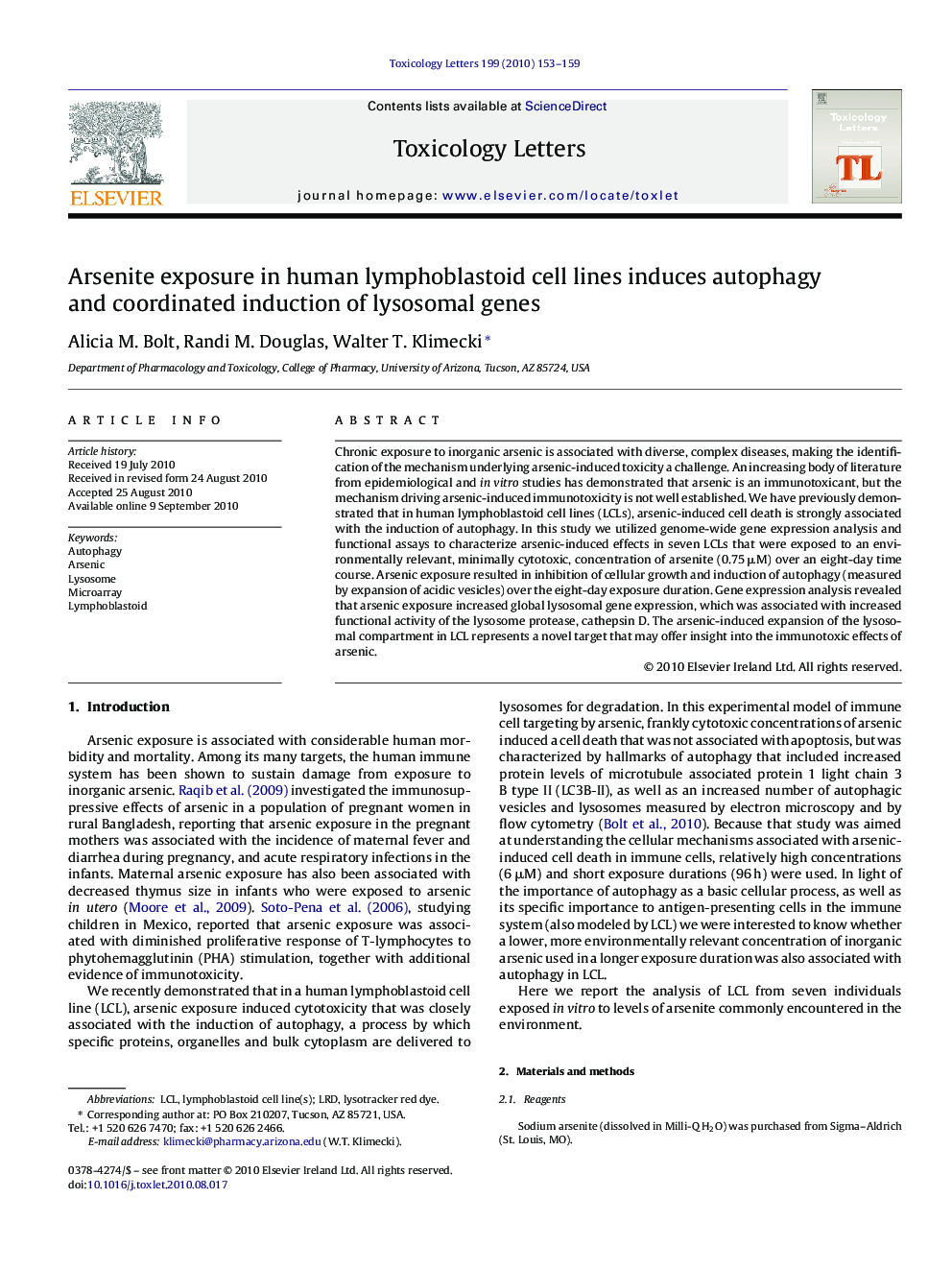| Article ID | Journal | Published Year | Pages | File Type |
|---|---|---|---|---|
| 2600035 | Toxicology Letters | 2010 | 7 Pages |
Chronic exposure to inorganic arsenic is associated with diverse, complex diseases, making the identification of the mechanism underlying arsenic-induced toxicity a challenge. An increasing body of literature from epidemiological and in vitro studies has demonstrated that arsenic is an immunotoxicant, but the mechanism driving arsenic-induced immunotoxicity is not well established. We have previously demonstrated that in human lymphoblastoid cell lines (LCLs), arsenic-induced cell death is strongly associated with the induction of autophagy. In this study we utilized genome-wide gene expression analysis and functional assays to characterize arsenic-induced effects in seven LCLs that were exposed to an environmentally relevant, minimally cytotoxic, concentration of arsenite (0.75 μM) over an eight-day time course. Arsenic exposure resulted in inhibition of cellular growth and induction of autophagy (measured by expansion of acidic vesicles) over the eight-day exposure duration. Gene expression analysis revealed that arsenic exposure increased global lysosomal gene expression, which was associated with increased functional activity of the lysosome protease, cathepsin D. The arsenic-induced expansion of the lysosomal compartment in LCL represents a novel target that may offer insight into the immunotoxic effects of arsenic.
